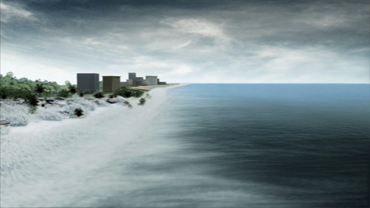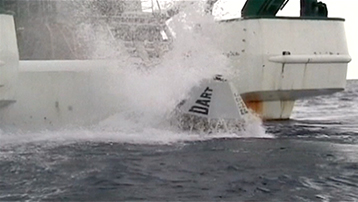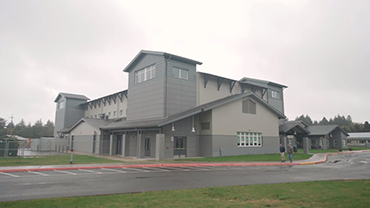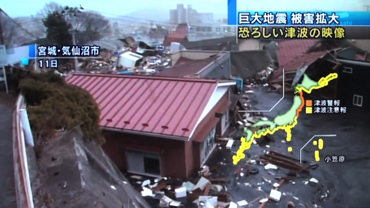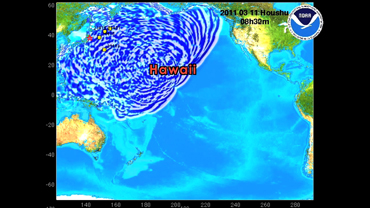Transcript
NARRATOR:
Imagine all of this underwater. In a major tsunami, it could happen. In this part of Washington State, it’s happened before, hundreds of years ago. Sometime in the future, it will likely happen again. But we can be ready. If a tsunami strikes, this school will provide a place for people to ride it out above the waves.
Dr. David Dooley, Principal, Ocosta ES:
We’re in Westport, Washington, and right behind me is the very first tsunami vertical evacuation center in the United States.
PA speaker:
"...At this time we would like to begin our earthquake drill. All students should drop and cover at this time... ...We will now begin the tsunami evacuation...This is an emergency: Please walk to the nearest exit, go to the stairs tower, and proceed up the stairs.”
NARRATOR:
Tsunamis are a potential hazard for low lying coastal areas, that’s why many coastal communities have plans in place to get people to safety, high ground or inland, where they can be beyond the reach of a tsunami.
Often there are signs showing where to go, and where to gather.
Most tsunamis are caused by underwater earthquakes along subduction zones, where two of earth’s plates collide and one is forced under the other. Westport and other Pacific Northwest coastal communities are especially at risk, because one of these zones lays just offshore. It’s called the Cascadia subduction zone.
An earthquake here caused a tsunami in 1700 that flooded shores as far away as Japan. Experts say, it’s just a matter of time before it happens again. Since the subduction zone is so close, a tsunami like the one in 1700 could strike before some people in some low lying areas could get to high ground or inland, and Westport doesn’t have a lot of high ground or easy routes inland.
Dr. David Dooley:
If we get an earthquake or tsunami, were going to get a lot of water in the area really quickly, and we needed a place to go. So our community built this brand new school and above our gym and cafeteria, we have a roof, and so the idea is that we’ll get all of our students up, and anybody from the community that needs to get up, they can get up there as well.
NARRATOR:
Ocosta Elementary School might seem like a normal school, but look more closely. It’s engineered to withstand monster waves. Tsunami vertical evacuation shelters must be able to resist the powerful forces that a tsunami brings. Hydrodynamic, buoyant, hydro-static, and debris impact forces and strong currents. They’re also designed to help people get to safety, quickly.
Dr. David Dooley:
There are four big staircases on each corner of the building and each one of those staircases are 8 feet wide and we can get the whole school evacuated in about four and a half minutes. On the roof of the building there is water and food and buckets and shelters and tarps and blankets and different things so that we can be up there for, two, three, maybe four days, while we wait for rescue.
You can go to the top and you know you’ll be safe. It feels so nice to have a special building because you feel protected.
This community decided that a tsunami evacuation center was important because they didn’t have anywhere to go and they decided to use their money to build a building. The additional cost is anywhere between 10-20% of the actual building cost itself, and that’s really a sound investment for a lot of protection. You may be there a while but you’re safe and you’re secure, and that’s the most important thing.
 An official website of the United States government.
Here's how you know we're official.
An official website of the United States government.
Here's how you know we're official.

